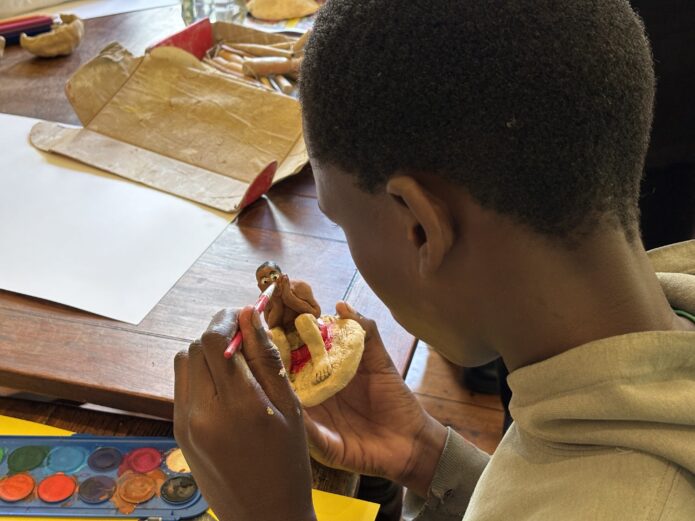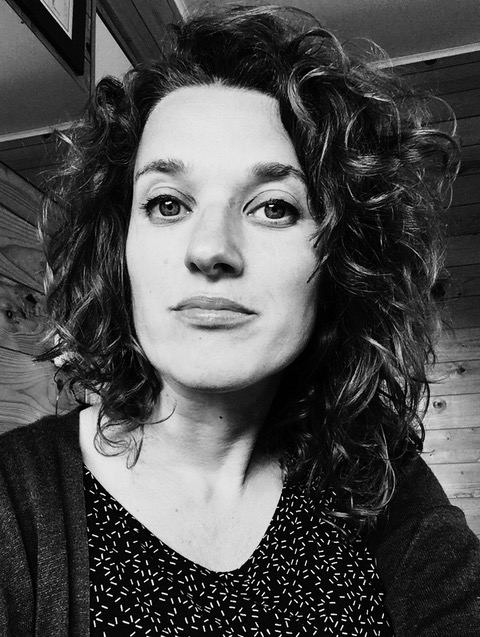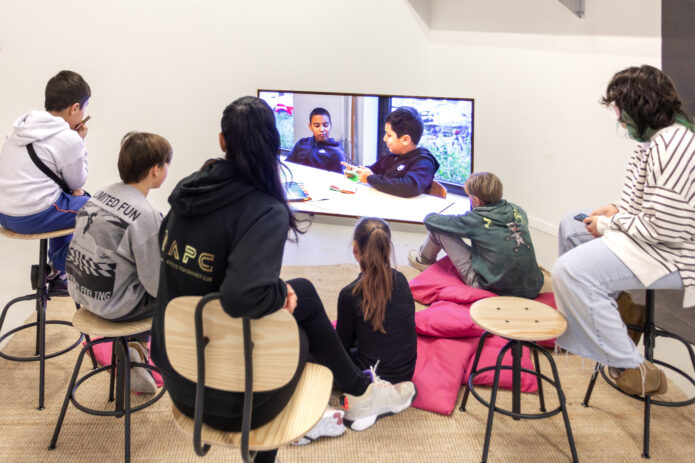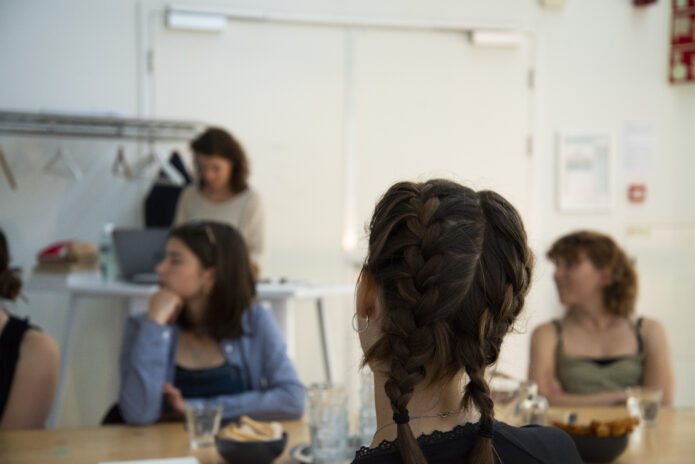
31 May –
29 Jun 2023
Education project: Shared Waters
Through the Shared Waters exchange project, you will explore you and your family’s journey to where you are today. The project will begin simultaneously in Amsterdam as well as in Cape Town, South Africa. Youth in Cape Town will also explore their personal history. This will provide you with the opportunity to not only exchange stories and experiences with other particpants from Amsterdam and Cape Town, but also to create artistic works together.
Discovering your family history can help you find out more about yourself, where your strengths come from and what matters to you.
In a small group of peers, under the guidance of artist Karine Versluis, you will be encouraged to creatively shape your search and findings. Karine is a documentary photographer and storyteller. Her work has been featured on TV and in newspapers and several exhibitions both in the Netherlands and abroad. Her third publication, the photobook Debaltsevo, Where Are You? about her search for hair roots in Ukraine, was published in February 2023.
Adjusted programme:
Wed 31 May, 16.00-18.00 @ Framer Framed
Wed 7 June, 16.00-18.00 online @Zoom
Wed 14 June, 16.00-18.00u @ Framer Framed
Wed 21 June, 16.00-18.00u @ Framer Framed
Everything you need to participate:
– You are curious about your roots in and/or outside the Netherlands
– You like being creative and enjoy meeting new people
– You have time to come to the meetings
– You are around 14-18 years old
If you are interested, please let us know via your parent(s), tutor(s), teacher(s) or directly to Framer Framed. There is a limited number of places, so sign up soon!
Register at: educatie@framerframed.nl
The Shared Waters project has been made possible with support from DutchCulture.
About the Camissa Museum
The Camissa Museum tells the stories of the peopling of the Cape. It reveals the rich and complex history of Camissa Africans, those classified as ‘Coloured,’ who have been portrayed by others for centuries but never by themselves. This history and these stories, that have been buried and hidden for centuries, are now told for the first time.
The museum is a place of memory and restoration; it uncovers a hidden ancestral and cultural past, crucial for communities to understand themselves and for a common understanding among different communities.
We believe that knowledge of our history and origins builds vital self-understanding that fosters that important sense of belonging and connection to place. We believe that a people who know their history and origins are better able to navigate their present and future.
Bringing these stories of the Cape, and its people, to life will bring healing, affirmation, and restoration of human dignity, after centuries of suffering colonialism, slavery, forced removals, restrictions on freedom of movement and imposition of the first pass laws, nineteen wars of dispossession, ethnocide, genocide, de-Africanisation and Apartheid.
The Camissa Museum invites you to take a journey with us to explore the emergence and progress of Camissa Africans from the year 1600 to the present, by tracking seven broad tributaries of peoples brought together from over 195 roots of origin, by forced migrations. These peoples faced great adversities together, but their collective story is of a people who rose above adversity and thrived.
The home of the Camissa Museum is the Castle of Good Hope, a Cape Town landmark which was the seat of colonial power for 200 years and which was built using the exploited labour of the enslaved. This project is one of a basket of projects emerging at the Castle as part of a process of transformation and restorative memory. Without restorative memory it is difficult to fashion the necessary restoration and transformation required across the broader South African social landscape.
What is the Meaning of Camissa?
Camissa is the creolised form of ǁkhamis sa, meaning ‘sweet water for all’ in Kora the Khoe-language of the Cape. It refers to the river that flows from the !areb (mountain) Huriǁammaǂkx’oa (rising from the sea – Table Mountain) down to huriǁamma (the sea) (ǁamma also means water). This river system has over 40 tributaries and springs. Today the river runs beneath the city of Cape Town. Symbolically, Camissa represents life because without water, life cannot be sustained. More generally, ǁkhamis sa is the Kora name used for fresh-water rivers across Africa.
The first Khoe traders who traded with European ships were settled in a small community on the banks of the Camissa River at the shoreline. These people of the Camissa called themselves ǁAmmaqua and the Europeans called them the Water People (‘Watermans’ in Dutch). Their familial ties were to the Cochoqua people of the West Coast. Other peoples who seasonally lived in the area were the Goringhaiqua and the Gorachouqua Khoe as well as the Sonqua, who were San fishermen people related to the ǀXam with some Khoe followers (Goringhaicona).
The Camissa settlement was seized by the Dutch in 1652 and over the next eight years the Camissa people were forced out of the area, particularly after the first Dutch-Khoe war in 1659. At the same time enslaved peoples from other parts of Africa and from Asia were forcibly brought across the shoreline in chains into the Camissa embrace.
Amsterdam Oost / Education / Shared Heritage / Colonial history / Workshop / South Africa /
Exhibitions

Exhibition: Shared Waters
Presentation of young people in Amsterdam and Cape Town searching for their roots, for mutual cultural connections past and present.
Network


